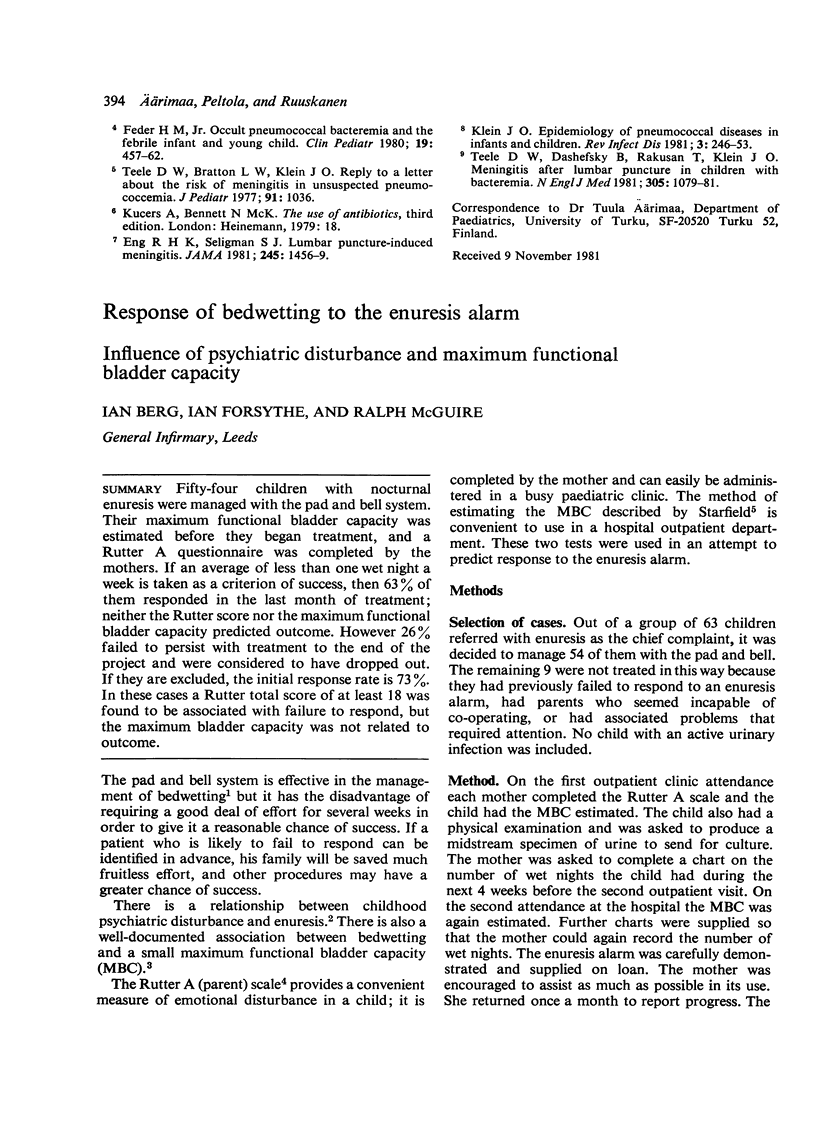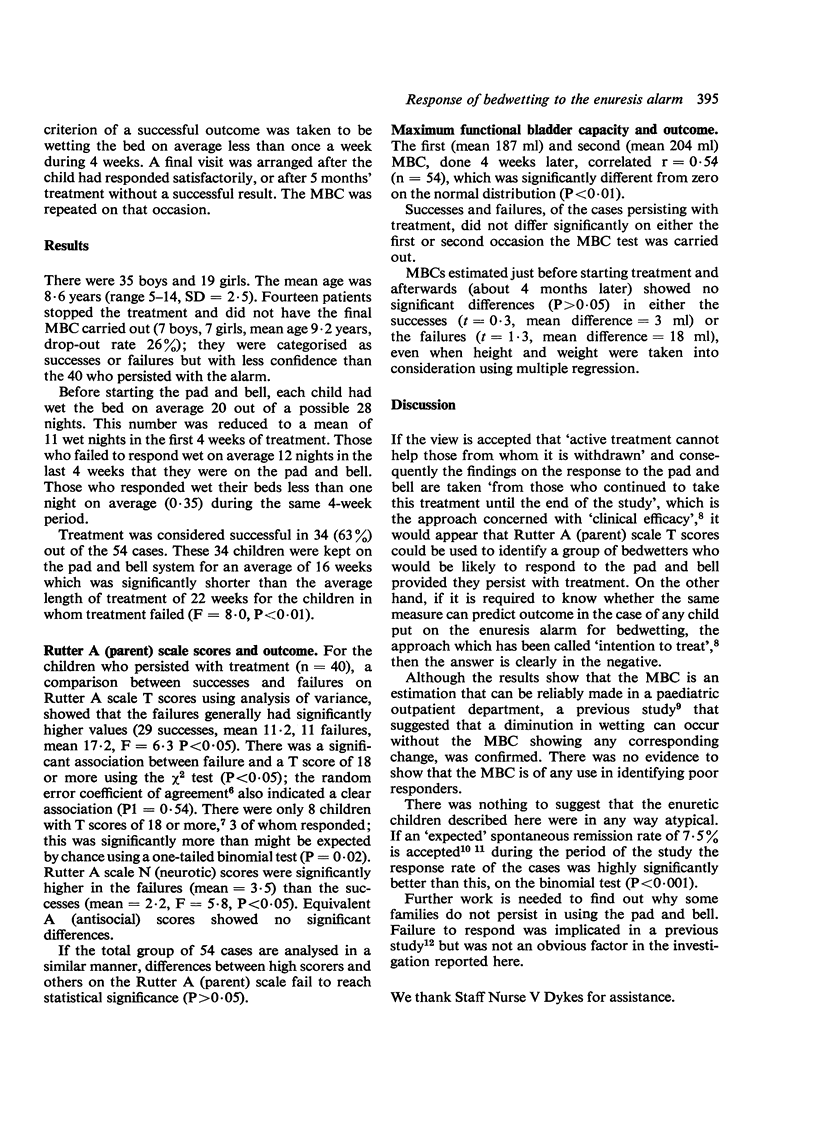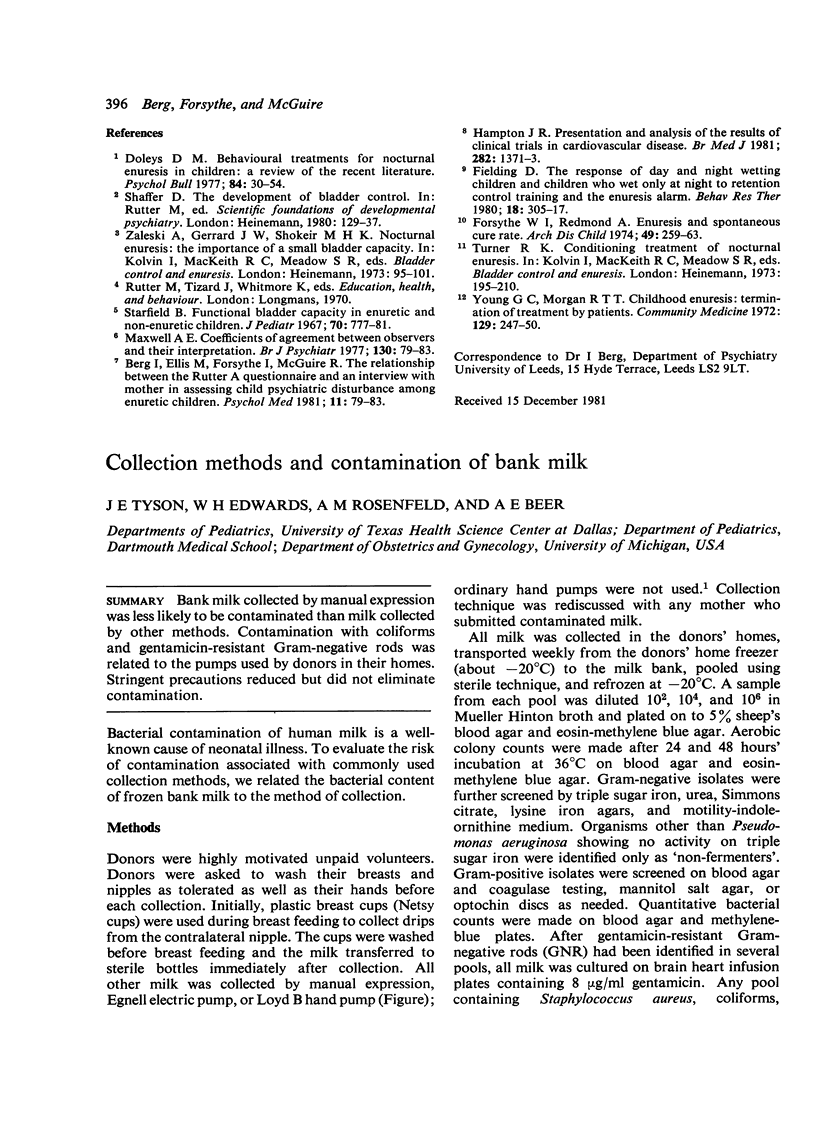Abstract
Fifty-four children with nocturnal enuresis were managed with the pad and bell system. Their maximum functional bladder capacity was estimated before they began treatment, and a Rutter A questionnaire was completed by the mothers. If an average of less than one wet night a week is taken as a criterion of success, then 63% of them responded in the last month of treatment; neither the Rutter score nor the maximum functional bladder capacity predicted outcome. However 26% failed to persist with treatment to the end of the project and were considered to have dropped out. If they are excluded, the initial response rate is 73%. In these cases a Rutter total score of at least 18 was found to be associated with failure to respond, but the maximum bladder capacity was not related to outcome.
Full text
PDF


Selected References
These references are in PubMed. This may not be the complete list of references from this article.
- Doleys D. M. Behavioral treatments for nocturnal enuresis in children: a review of the recent literature. Psychol Bull. 1977 Jan;84(1):30–54. [PubMed] [Google Scholar]
- Fielding D. The response of day and night wetting children and children who wet only at night to retention control training and the enuresis alarm. Behav Res Ther. 1980;18(4):305–317. doi: 10.1016/0005-7967(80)90089-3. [DOI] [PubMed] [Google Scholar]
- Forsythe W. I., Redmond A. Enuresis and spontaneous cure rate. Study of 1129 enuretis. Arch Dis Child. 1974 Apr;49(4):259–263. doi: 10.1136/adc.49.4.259. [DOI] [PMC free article] [PubMed] [Google Scholar]
- Hampton J. R. Presentation and analysis of the results of clinical trials in cardiovascular disease. Br Med J (Clin Res Ed) 1981 Apr 25;282(6273):1371–1373. doi: 10.1136/bmj.282.6273.1371. [DOI] [PMC free article] [PubMed] [Google Scholar]
- Maxwell A. E. Coefficients of agreement between observers and their interpretation. Br J Psychiatry. 1977 Jan;130:79–83. doi: 10.1192/bjp.130.1.79. [DOI] [PubMed] [Google Scholar]
- Starfield B. Functional bladder capacity in enuretic and nonenuretic children. J Pediatr. 1967 May;70(5):777–781. doi: 10.1016/s0022-3476(67)80330-5. [DOI] [PubMed] [Google Scholar]


